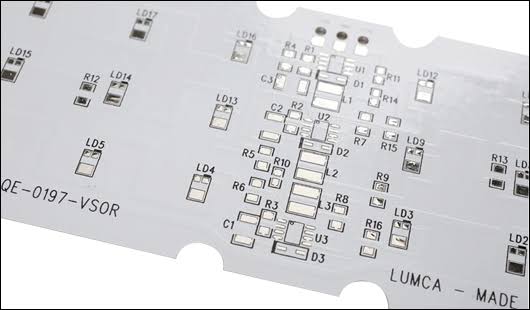PCBs are printed circuit boards that contain a thin layer of conductive electrical insulation material. Aluminum clad PCBs are also known as Aluminum core, Aluminum clad PCBs, Metal Clad Printed Circuit Boards, or Thermally Conductive PCBs are similar to Aluminum coated PCBs. It was not long after the discovery of aluminum PCBs in the 1970s that their demand soared tremendously. Aluminum PCBs were used for the first time in hybrid amplifier circuits. Aluminum PCBs are currently being used at a much larger scale, so it is essential for us to be informed about the advantages of aluminum PCBs as well as their importance in the community.
There is no single design for flexible and unbending printed circuit boards (PCBs). Each design is customized for a particular board. PCBs are also available in aluminum-based and fiberglass-based materials. Fiberglass-based PCBs are popular, but aluminum-based PCBs are also widely used in many different applications. The aluminum PCB is made from copper-clad laminates, providing excellent thermal and electrical insulation. You can get more information on europepcb.com.
What is the process of making aluminum PCBs?
The copper foil circuit layers are covered by metal-based seals on aluminum printed circuit boards. Aluminum, magnesium, and silumin (Al-Mg-Si) are combined to form alloy plates. In addition to offering excellent thermal and electrical insulation, aluminum PCBs are high performing and different from other PCBs in many ways.
Base layer
Aluminum alloy is used as the substrate for this base. Aluminum’s conductive properties make this type of PCB a fantastic choice for through-hole technology, which will be discussed in the following section.
Read Also: Skin nourishing oil to moisturize the skin.
Thermal protection layers
The module on the PCB is critically important. The PCB is protected against mechanical and thermal stresses by a ceramic polymer with excellent thermal resistance and viscoelastic properties.
Circuit layer
As mentioned earlier in this article, this layer contains copper foil. Copper foils ranging in weight from one to ten ounces are usually used by PCB manufacturers.
While current flows through the circuits, the dielectric layer absorbs heat. In this case, the heat is transferred to the aluminum layer, which dissipates the heat.
By increasing the light output, the heat generated is amplified. The longer the product lasts, the more heat it generates. With a skilled manufacturer, you will receive superior protection, heat mitigation, and parts that perform well.
Circuit boards and their evolution
In the 1850s, large components installed on wood bases were connected with metal strips or rods. PCBs are related to those connections. As time passed, metal strips and metal chassis were replaced by wires connected to screw terminals instead of wooden bases.
Despite being significant technological advancements, the systems were far too large to satisfy the growing demand for smaller, more compact designs that can be implemented with circuit boards by-products.
A stencil with conductive inks was developed by Charles Ducas of the United States so that electrical paths could be “printed” directly on insulated surfaces. The phrases “printed wiring” and “printed circuit” came into existence as a result of his 1925 patent.
PCB types made of aluminum
Most aluminum PCBs are used by LED and power converter manufacturers. Printed circuit boards of this type are also used by radio frequency (RF) and automotive companies. The simple design of a single layer makes it more common, but there are other options available as well.
PCBs with flexible aluminum
Dielectric materials with a flexible structure are a recent development in Insulated Metal Substrates (IMS). They are designed with ceramic fillers and polyimide resin fillers, which offer greater thermal and electrical insulation, as well as greater flexibility. If the PCB is made from flexible aluminum materials (such as 5754), it will be able to be formed and angled in order to eliminate expensive components such as connectors, cables, fixtures, etc. Despite the flexibility of the materials, it is designed to stay in place regardless of how you bend the material. There are some applications where these materials are not suitable for, such as those requiring frequent flexion of the materials.
PCBs with through-hole aluminum
The central core of a complex thermal structure can be formed by a single layer of aluminum. Before lamination, through-hole PCBs are pre drilled and the holes are filled with dielectric. A thermal bonding material is next laminated to both sides of the aluminum to hold thermal materials (or sub-assemblies) in place. Through-holes are plated through the aluminum clearances to provide electrical insulation after lamination, similar to the process of drilling through a multilayer PCB.



